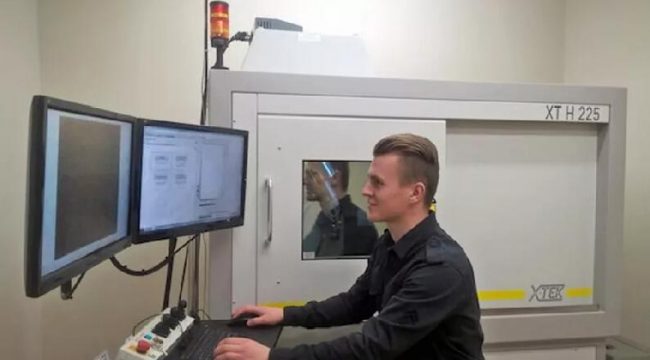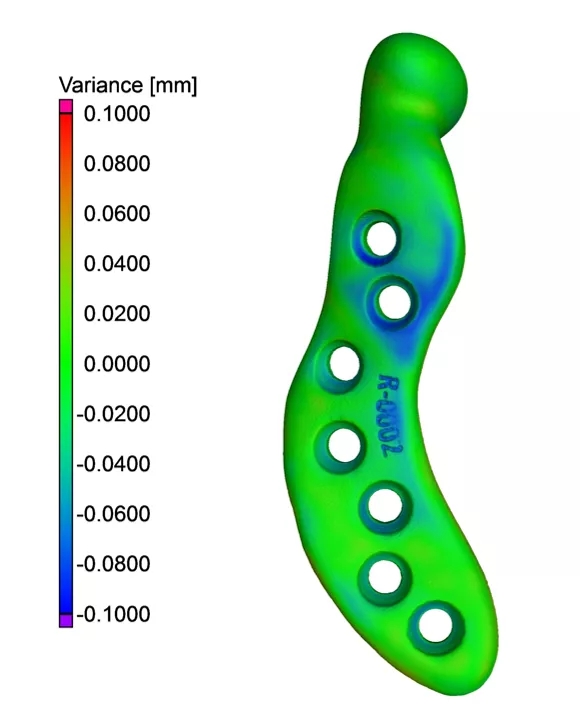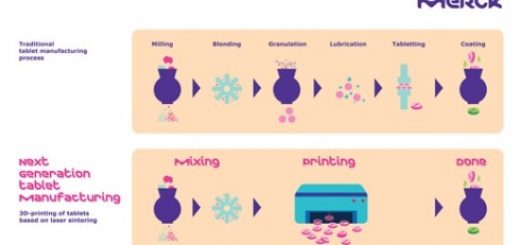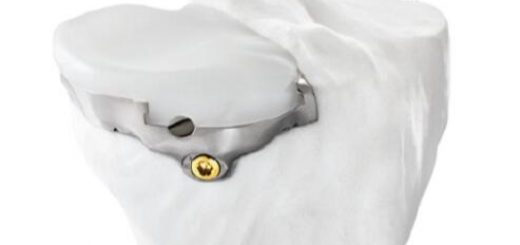CT Inspection Advances 3D Printed Bespoke Medical Implants Production
8Ortho Baltic, a manufacturer of patient-specific medical implants recently invested in additive manufacturing and CT inspection technology. It is vital for such components to be of outstanding quality, therefore an assured quality control system is integral to the company’s success.

Ortho Baltic is a medical company based in Kaunas, Lithuania and is the first patient-specific TMJ (temporomandibular joint) endoprosthesis manufacturer in the Baltic states. ‘Endoprosthesis’ is an artificial joint implant. It is used to replace the loss or lack of functionality of a joint in the body.
In its mission statement, there are two challenges: to change the thought paradigm from “the same implant fits all”, to an individual patient specific view. And to make patient-specific implants affordable for all patients and national healthcare systems in terms of price and delivery.
In 2012, the company invested in additive manufacturing technologies. It expanded its made-to-order services to the design and production of patient specific joints, cranial and spinal implants bone plating systems, dental and jaw restoration implants and patient-specific surgical guides. For these purposes, Ortho Baltic deals in one-off production and requires one-off inspection of the 3D printed components.
![]() 3D printing bespoke medical implants
3D printing bespoke medical implants
Requiring a limitless production method that enables complete flexibility in design iterations, 3D printing was the stand out solution for the needs of Ortho Baltic. It offers infinite flexibility and is able to bring complex designs or forms to reality at a far more affordable cost than ever before. Investing in the latest technology lead to the establishment of its Implant Design and Development Center consisting of various additive manufacturing and quality control equipment.

Ortho Baltic uses a variety of additive manufacturing processes for the different kind of components produced. Typically, implants are made from the medical Grade-5 titanium alloy Ti6Al4V by direct laser metal sintering (DMLS). For its single-use patient-specific surgical guides and implant models a biocompatible polymer PA 2200, also known as Nylon-12 is used for selective laser sintering (SLS).
X-ray plays an important role in the process from start to end. The medical X-ray CT scans are the basis to prepare the CAD model while the quality inspection of the AM parts is verified with an industrial high voltage micro-CT scanner.
Milda Jokymaitytė, Clinical Engineer at Ortho Baltic explains the process by saying, “To create the patient-specific anatomical models, 3D reconstruction engineers work with a radiologist (if necessary) using the patient’s radiological data to perform a 3D reconstruction. The anatomical bone structures are segmented and virtual 3D models are prepared.”
Milda continues, “Including printing, quality control, packaging and sterilization, the usual lead time for a patient-specific TMJ is approximately four weeks following the surgeon’s approval of final design. From this point onwards, the pre-surgical planning commences between patient and surgeon, ultimately leading to surgery completion.”
![]() Micro-CT: the quality assurance solution for additive manufactured medical implants
Micro-CT: the quality assurance solution for additive manufactured medical implants
The capabilities of 3D printing are there for all to see, but an important challenge is the assurance of quality in additive manufactured components. Especially in the medical field, the quality, fit and functionality of implants and other medical devices is vital.
Domantas Ozerenskis, Product Quality Manager at Ortho Baltic explains that “For today, micro-CT is the best solution for our product development and quality control”. He continues, “3D printing is a very complicated technology and has a big variation of processing parameters, consequently it is hard to predict the structure quality and geometry of a printed part”.
The implementation process for the patient-specific implants is referred to as a pre-planned treatment solution. For this method, the whole procedure must be planned down to the last detail, so that it’s as simple as putting the prosthesis in place. For this reason, it is crucial to be 100% sure that implant geometry is exactly the same as the CAD model.
![]() XT H 225 at Ortho Baltic, Lithuania.
XT H 225 at Ortho Baltic, Lithuania.
Ortho Baltic uses the XT H 225 for quality inspection of patient-specific medical implants produced by additive manufacturing.
225 kV micro-focus source enables penetration of the medical grade-5, dense titanium alloy used in Ortho Baltic’s implants
CT scans reveal all internal voids and defects of the complex internal features of additive manufactured components non-destructively
CAD comparison enables CT scans to be compared with CAD design for inspection of deviations
Working area can hold large and heavy material samples for effective inspection
![]() Non-destructive inspection of titanium prostheses
Non-destructive inspection of titanium prostheses
The final result: patient-specific temporomandibular joint (TMJ).For Ortho Baltic, micro-CT was the outstanding quality assurance system for inspecting additive manufactured components. Domantas explains that “a CMM especially with tactile probing is inconvenient for non-parametric measurements, also there is no possibility for inner structure investigation.” He continues, “The inner quality of implants determines the mechanical resistance of the part, and micro-CT is the only non-destructive way to check for voids and cracks inside of the part.”
High power CT, micro-focus accuracy and the non-destructive nature of CT were the requirements that would provide the engineers at Ortho Baltic a full, comprehensive and unparalleled insight into the conformity of its products. The first requirement for the equipment was to be able to penetrate the titanium components. For this, Ortho Baltic needed at least a 200 kV energy source, for sufficient power to scan the dense materials. The secondary requirement was for the system to have a large enough working area. With Ortho Baltic’s components varying for each patient and each procedure, a platform capable of holding a range of large or heavy components was needed.
The Nikon Metrology system Ortho Baltic settled on was the XT H 225, with Varian 4030 digital panel and Inspect-X software. The XT H 225 working area is able to hold large sample sizes and weights up to 15 kg. The 225 kV micro-focus source also offers sufficient energy for penetration of the dense materials including titanium alloy, from which the implants are made.
![]() An irreplaceable quality control tool
An irreplaceable quality control tool
A current challenge in additive manufacturing industries is deploying a comprehensive inspection solution to verify the individual products. However, micro-CT presents itself as the answer. For Ortho Baltic, the XT H 225 suits all requirements of a quality control system.
Very impressed with the whole service, Domantas attests to Nikon’s professionalism by saying, “The installation and training was very successful, trainers were very high level engineers. The maintenance is also very quick and professional, we have nothing to worry about”.
The CT system has helped Ortho Baltic in its mission to make patient-specific implants affordable and widely available with successful procedures already having been completed. In comparison to standard implants previously sourced from the United States, Ortho Baltic has been able to produce these patient specific implants at almost half the cost. It is important to stress that despite the ability to produce implants for much cheaper, the quality is in no way sacrificed. From a recent article following a procedure, maxillofacial surgeon – S. Bojarskas explains that aside from needing more extensive planning, the product itself is no different in terms of quality.
Domantas discusses how the XT H 225 is a fundamental quality control tool for Ortho Baltic by saying, “Nominal (CAD) to actual 3D printed implants comparison, geometry inspection and void detection is very useful and irreplaceable for the quality control of our application. The Nikon solution offers better knowledge of what we are manufacturing. It gives better precision and understanding of 3D printing errors and deviations.”
In most cases of 3D metal printing, post-processes such as sandblasting and polishing take place. What micro-CT has also helped to show is that these processes often remove thick surface layers up to 200 microns and even thicker for manual processes. Domantas explains, “This micro-CT data allowed us to adjust our CAD and 3D printing protocols to get the most accurate geometry for all 3D printed parts”.
Very impressed with the service from Nikon Metrology, Domantas concludes by saying, “An implant with Nikon quality assurance is more reliable and easier to prove its value”.
Following the successful installation, Ortho Baltic not only performs quality control for implants, but also applies this technology for the activities of various national and international scientific researches and projects.
Source: METROLOGY




Recent Comments